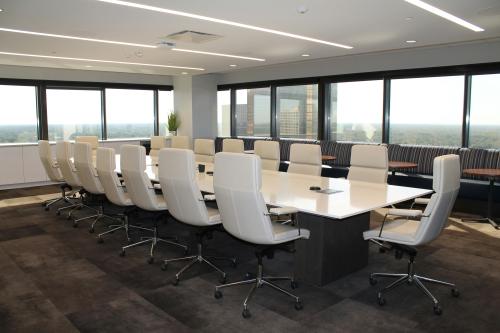CEOs must show up and be heard at annual meetings
IROs are likely to regard annual general meetings (AGMs) as more of a chore than an eagerly anticipated event. Some disasters serve as reminders that you play dangerously by inviting people who have bet their savings on your success. There’s also the tedium of going through the same old routine every time.
As some companies do meetings better than others, examples provide a useful guide. It’s always easier to please investors when a company’s figures are looking peachy, but it’s still possible to put on a decent show when things aren’t going well. Likewise, a company can bomb even when it has good news to report.
WORST: Sara Lee
Shareholders at Sara Lee’s October 2006 annual meeting were eager to hear the relatively new chief, Brenda Barnes, update them on her efforts to restructure the troubled food retailer. Shares of the stock were down and even drew a ‘sell’ rating from one of the key analysts, but Barnes skipped the meeting because of an unspecified illness, leaving board director Jim Crown to run it instead.
As chairman of Henry Crown, a private investment company, Crown was ill-equipped to deal with disgruntled investors, an insider says, the cause of whose anger ranged from the stock slide and the dual president/chairman titles to the CEO’s pay. Crown defended Barnes’ compensation as ‘competitive’, even as 43 percent of shareholders voted for a union-backed ‘say on pay’ resolution.
What really set the meeting apart, however, was the arrival of hundreds of senior citizens, attending the meeting in the mistaken belief that the food retailer would be providing a lavish breakfast. Sara Lee didn’t serve any food whatsoever, which was ironic considering the first order of business on Crown’s agenda was Sara Lee’s efforts to turn around its ‘breakfast on-the-go’ strategy. When he cued up commercials showing actors snacking on the company’s new pastries, the OAPs led the crowd in boos.
WORST: Blacks Leisure
Often it’s obvious things that make or break a meeting. At outdoor clothing retailer Blacks Leisure’s AGM, the key problem was inaudibility.
And the company actually had some good news to tell: the spate of bad weather in the UK had worked in its favor. Unfortunately, the benefits were not communicated to all the investors present, many of whom were out of earshot.
‘The 15-minute AGM was mostly taken up with the chairman mumbling through a prepared trading statement with no amplification and half of the room had not even realized the meeting had started,’ recalls Alan Brett, a research manager at Essex-based proxy advisory firm Manifest. ‘It was only after the air conditioning in the room was turned off that anyone could hear a thing.’
The number of institutional investors attending meetings in the UK is dwindling, and cynicism appears to be growing in some quarters about the increasing trend for stage managed AGMs. ‘For some firms, AGMs are merely an annoyance,’ Brett says. ‘For institutional investors they can be a waste of time; for some shareholders the priority is the quality of the food laid on.’
WORST: Patsystems
Putting on an AGM can be a minefield for newly listed companies lacking PLC experience, as it was this year for AIM-listed Patsystems. Standard resolutions such as ones that permit companies to buy back their shares without further recourse to shareholders are normally passed with little fuss. Not at this meeting.
Roger Lawson, an AGM attendee, says the chairman introduced the resolution and immediately announced that the proxy votes showed it would fail, ‘so he carried on and didn’t even put the resolution to the meeting.’
When a resolution is voted down, the chairman usually puts it to a show of hands. ‘Generally, the proxy votes count only if you call a poll,’ Lawson says. ‘If he had explained to the meeting what these resolutions were and why they were being put forward, he probably could have got them passed on a show of hands.’
Lawson described the meeting as ‘a shambles’. The chairman didn’t understand what was going on, nor did the shareholders, who voted against the resolution by proxy. Tales like this are surprisingly commonplace when boards have not yet got to grips with the conventions and legalities of the meeting procedure.
BETTER: Home Depot
If Home Depot’s famously bad 2006 AGM was an example of how to get it wrong, some say this year’s effort is a textbook example of how to do it right. The company moved the meeting from Delaware back to Atlanta, its home base. And instead of putting a time clock on comments, shareholders were allowed to speak at length. Company officials answered questions on everything from diversity to strategic planning to the company’s environmental footprint. And, yes, they also addressed a 2006 flashpoint: executive pay.
The directors were no-shows to the AGM in 2006, but this year only one missed the meeting. They also made the effort to turn up for an informal shareholder breakfast before the meeting, and made themselves available afterwards. In his opening statement, new CEO Frank Blake apologized for the ‘mistake’ of last year’s AGM, setting the tone for the rest of the confab.
The two meetings were ‘polar opposites’, says Richard Ferlauto, director of corporate governance and pension investment at the American Federation of State, County and Municipal Employees, who reckons the previous meeting was one of the worst he has ever attended. But in 2007 ‘directors were visible and engaged and shareholders could approach them with concerns,’ he adds.
BEST: Marks & Spencer
Marks & Spencer revealed the slowest rise in its retail sales figures in six quarters this July after a sluggish summer, but it didn’t let the bad news get in the way of putting on a good AGM. The M&S team went to Earl’s Court in London and scored points with investors as much for the effective management of the meeting as the tasty snacks available.
‘The chairman managed the meeting very effectively, the chief executive put on a good presentation and the level of interaction was good,’ says Deborah Gilsham, corporate governance manager at Co-operative Insurance Society. ‘The firm took questions from shareholders submitted via the website, which I thought was pretty novel, and it also broadcast the AGM online and made it available after the meeting.’ Gilsham, whose company produces an annual shortlist of the best AGMs in the UK, says it’s surprising how often directors nod off during meetings and board members fail to show up. ‘It’s a problem, not just at new companies,’ she notes. At one Amstrad AGM, chairman Alan Sugar failed to attend, ‘which just sends a message to shareholders that the company doesn’t want to listen,’ Gilsham says.
BEST: AIG
Investors had ample reason for the jitters when the American International Group (AIG) kicked off its annual meeting in August 2005. In the months leading up to it, accounting investigations had vaporized $50 billion in market capitalization. After ousting its CEO, Maurice Greenberg, the insurance giant restated $3.9 billion in net income. On the horizon loomed a potentially very costly civil lawsuit brought by New York’s former attorney general, Eliot Spitzer, and months of investigations.
But the heads of AIG saw the AGM as an opportunity to build bridges with shareholders. They reported on their progress turning the company around – and signaled that its days of defense were behind it. Greenberg had previously accused regulators of ‘turning foot faults into murder.’ This time, acting chairman Frank Zarb assured shareholders that the company now had a productive, ‘professional’ relationship with those investigating its accounting and planned full cooperation.
He listed a series of reforms, and took questions from shareholders. AIG’s chief financial officer Steven Bensinger pledged to improve internal controls and the board voted to increase the quarterly dividend. And shareholders responded by reelecting the board. Although there may still be some dark days ahead, many shareholders said they left the meeting feeling better about the company’s prospects.








